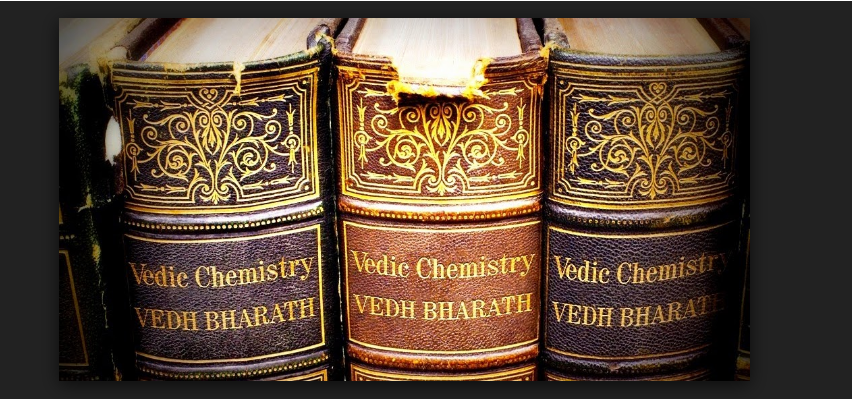History of Indian Chemistry info The Chemicals Man
India has a very ancient tradition of chemistry. In ancient texts, wonderful information is available of metals, ores, their mines, compounds and alloys. There are also details of hundreds of devices used in chemical operations.In fact, in any country, scholars have to rely on three types of evidence to study the emergence and development of a particular knowledge-
(1) The ancient literature of that place,
(2) Traditional knowledge- which survive the generation of generation,
(3) Archaeological evidence.
From this point of view, it is best to scrutinize the vast Sanskrit literature in India to determine the emergence of chemistry. It is notable that Vedas are considered as the oldest source of knowledge of any kind in India. It is also believed that Rig Veda is the oldest. In the Earliest period, the beginning of the invention of new elements from the eighteenth century of Christ began. Prior to this, knowledge of only seven metals was humanity. These are - Gold, Silver, Copper, Iron, Tin, Lead (lead) and Parad. All these metals are mentioned in the oldest Sanskrit literature, including Rig Veda, Yajurveda and Atharvaveda. Antiquity of the Vedas has been prescribed thousands of years before Isa.
Thus, on the basis of the description of the metals in the Vedas, we can start chemistry in India thousands of years ago. It is notable that the composition of the Upanishads is also considered around the Yajurveda, whereas a clear description of the metallic mixture is found in the Chhandogya Upanishad. If we do not consider it sufficient and say that only with the proper proof of the knowledge of the processes used in chemistry and the chemical reactions, we can think of the beginning of chemistry, even then we have seen the millennium Millennium) will have to agree. This was the time when the world famous Charak and Sushrut codes were processed, in which for the medicinal experiments, the acquisition of mercury, zinc, copper metals and their alloys in pure form and chemical processes, such as milk, A detailed and rational description of distillation, steam distillation etc. is available. Of course, this kind of knowledge will start from the very beginning, surely it must have happened very long ago. It is notable that after writing these classical texts, in this period (3rd century BC) Kautilya composed his famous treatise "Economics" in which very accurate information related to metals, ores, minerals and alloys and their mining , Exploration, management of mines and metallurgical surprises. This treatise in this type of scientific knowledge in India presents the oldest example. From the second millennium to the 1st millennium to the 12th century, there is abundance of such books which are purely based on chemistry and in which chemical verbs are described in the narration of processes. Among them, very serious details are found in mineral, ore, metallurgical, alloy discourse, catalyst, theoretical and experimental chemicals, and hundreds of devices in them.
In the issue of "Indian intellectual property" in February, 2000, a list of 127 books is published in reference to the Marathi book "Rasamjari" (Author- TG Black), published in 1940. It is worth noting that Charak and Sushruta codes are not included in this list. Many of the facts and procedures described in these books have now begun to meet the norms of modern chemistry.
Take the book "Rasaratnakar" first written by Nagarjuna in the second century. It is believed that a Buddhist chemist of this name, born in the sixth century, reviewed this book. That's why this book is available in two forms. Anyway, this book has got the ultimate knowledge of chemicals in its own right. In the sixth century, Varahamihari described the method of building extremely high quality steel to make weapons and weapons in his "Great Code". The quality of Indian steel was so high that historical evidence of export of swords made from them to Persia etc. was found.
Most of the books were written between the 8th century and the 12th century. The chief among them are: Ashtangahridaya of Vagbhat, Rasradrityantra and Rasarnava of Govind Bhagvatpad, Rameswarkappal of Somdev and Rasandra Chunamani and Gopalbatta's Rasendrasar Collections. Some other important books are- Raspalpa, Rasaratanasamu, Rasjalnidhi, Rasprakash Sudhakar, Rasendra Kapaludram, Raspradip and Rasangal etc.
The archaeological evidence of the rich ancient tradition of chemicals in India is also scattered in all the countries. While the chemical analysis of metal samples obtained from archaeological sites, where their high quality is introduced, the carbonity of many substances also establishes antiquity as irrevocably. Antarctic evidence of metal mines active from north to south and from east to west, active in all directions in the period from 3000 BC to 300 years BC. They are mainly found in states like Uttar Pradesh, Karnataka, Rajasthan, Bengal, Bihar, Punjab, Gujarat etc. The purity of iron, copper, silver, lead etc. obtained from the sites of Nalanda, Harappa, Mohenjodaro, Lothal and Taxila etc., exposed by excavation, has been found to be 95 to 99 percent. Brass and bronze, alloys from these places also.
Brass and bronze, alloys are also abundant in these places. Their purity is an indication that there is an ancient tradition of metallurgical high-grade metalwork in India. The furnaces, which are used in metallurgy from archaeological sites, correspond with the details of all Sanskrit books. Watty shaft found on the depth of 600 feet in the gold mine of Hatti is a living example of the conquest of Indian skills in the field of technical.
Many of the ancient Indian chemistry traditions survive generations and are alive for modern times. Even today thousands of Vaidya are releasing medicines based on medicinal and botanical sources in the manner prescribed by Charak, during which many chemical processes have to be edited. In the year 1800 AD also, in British India, according to British documents, about 20,000 kilns used to get various metals, of which ten thousand were only iron furnaces and 80,000 of them were employed. The quality of the steel product was more than the steel of Sweden considered to be the best at that time. The witness is Captain Pastegren, the English manager of the then coin building factory, and another Englishman Major James Franklin. At the same time and for quite a while, many other chemical based chemicals such as soap, ammunition, neel, ink, sulfur, copper, zinc etc. were also being prepared from Indian tech. Very soon after the advent of Western technology during the British rule Indian technology was forgotten.
Thoughts of Will Durant on the status of chemistry in India
"Something has been said about the chemical excellence of cast iron in ancient India, and about the high industrial development of the Gupta times, when India was looked to, even by Imperial Rome, as the most skilled of the nations in such chemical industries as dyeing, tanning, soap-making, glass and cement... By the sixth century the Hindus were far ahead of Europe in industrial chemistry; they were masters of calcinations, distillation, sublimation, steaming, fixation, the production of light without heat, the mixing of anesthetic and soporific powders, and the preparation of metallic salts, compounds and alloys. The tempering of steel was brought in ancient India to a perfection unknown in Europe till our own times; King Porus is said to have selected, as a specially valuable gift from Alexander, not gold or silver, but thirty pounds of steel. The Moslems took much of this Hindu chemical science and industry to the Near East and Europe; the secret of manufacturing "Damascus" blades, for example, was taken by the Arabs from the Persians, and by the Persians from India."

